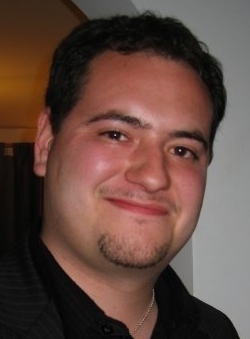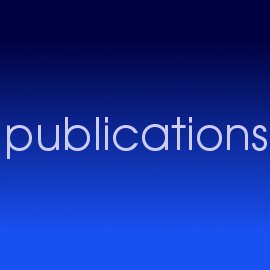People
|
This is a comprehensive list of scientists involved in the
GNS. Members of the Nottingham GNS group are highlighted and
described in more detail below.
C. J. Conselice (PI)
,
A. Bauer
,
S. Bevan
,
A. F. L. Bluck
,
R. Bouwens
,
F. Buitrago
,
S. Chapman
,
R.-R. Chary
,
E. Daddi
,
M. Dickinson
,
H. Ferguson
,
M. Franx
,
M. Giavalisco
,
N. Grogin
,
R. Grützbauch
,
G. Illingworth
,
S. Jogee
,
A. Koekemoer
,
R. Lucas
,
B. Mobasher
,
A. Mortlock
,
L. Moustakas
,
C. Papovich
,
S. Ravindranath
,
D. Scott
,
H. Teplitz
,
I. Trujillo
,
M. Urry
,
T. Weinzirl
,
P. van Dokkum
,
H. Yan
|
|

| |
Christopher J. Conselice
Prof. Christopher Conselice is the PI of the GOODS NICMOS Survey. His main
interest in the survey is uncovering the formation of the most massive
galaxies in the universe during the epoch when a large fraction of their
stellar mass formed. He is also investigating the star formation and
merging history for the entire galaxy popuation as imaged within the
NICMOS fields.
conselice_at_nottingham.ac.uk
|
|

| |
Amanda E. Bauer
Amanda is a post-doc with the GNS group at the University of Nottingham after having
received her PhD from the University of Texas at Austin in 2008. Within the GNS collaboration she acts as
the star formation guru. In general, she is interested in investigating how galaxies came to be as they
are. She uses earth-based and orbiting space telescopes, sensitive to all regions of the
electromagnetic spectrum, to explore variations in how galaxies formed, how they lived their lives, and
how they evolved into the diverse array of galaxy species we see today.
amanda.bauer_at_nottingham.ac.uk
|
|

| |
Asa F. L.
Bluck
Asa is in the third year of his phD at Nottingham and will start his position as a Gemini
Science Fellow in Hawaii in November 2010. His work connects galaxy merger rates and merger fractions with
the co-evolution of galaxies and their central massive black holes. Is the evolution of massive galaxies at high
redshift dominated by external influences like galaxy merging or is it mainly regulated by internal
processes like AGN feedback? Asa uses data from a wide range of the electromagnetic spectrum, ranging from
near infrared to X-ray observations.
ppxab3_at_nottingham.ac.uk
|
|

| |
Fernando Buitrago
Fernando is a phD student in the GNS group at Nottingham since Spring 2008 and is jointly
supervised by I. Trujillo at the IAC in Tenerife, Spain. His research is focused on massive galaxies
at high redshifts and how their structures and sizes might evolve over cosmic time. He is actively
involved in the hot topic of size evolution of massive galaxies, arguing that the most massive
galaxies in the early universe are more compact by a factor of up to 5 compared to similar mass
counterparts in the local universe. He works with near infrared imaging as well as 3D spectroscopy.
ppxfb_at_nottingham.ac.uk
|
|

| |
Ruth Grützbauch
Ruth joined the GNS group as a post-doc in September 2008. Her work focuses on the
connections between galaxy properties and their environment, using ground and space-based observational
data. Many physical processes that influence galaxy evolution depend on the type of environment a galaxy is
located in, such as galaxy merging, which happens preferentially in smaller groups, or harrassment and ram
pressure stripping, which require the deep potential well of galaxy clusters. How important are
environmental factors in shaping the galaxies we observe, today and in the early universe?
ruth.grutzbauch_at_nottingham.ac.uk
|
|

| |
Alice Mortlock
Alice has started her phD in the GNS group in Autumn 2009. She is investigating the
evolution of stellar mass functions up to a redshift of z~3, including the differential behaviour of red
and blue galaxies over more than 2 orders of magnitude in stellar mass. How do mass functions in the
early universe compare to the local universe? When did galaxies of different stellar mass form and are
they already in place at high z, compared to their local number densities? Is there evolution in the
shape or the slope of the mass function and possibly from blue to red galaxy populations?
ppxam_at_nottingham.ac.uk
|
|
|
|





